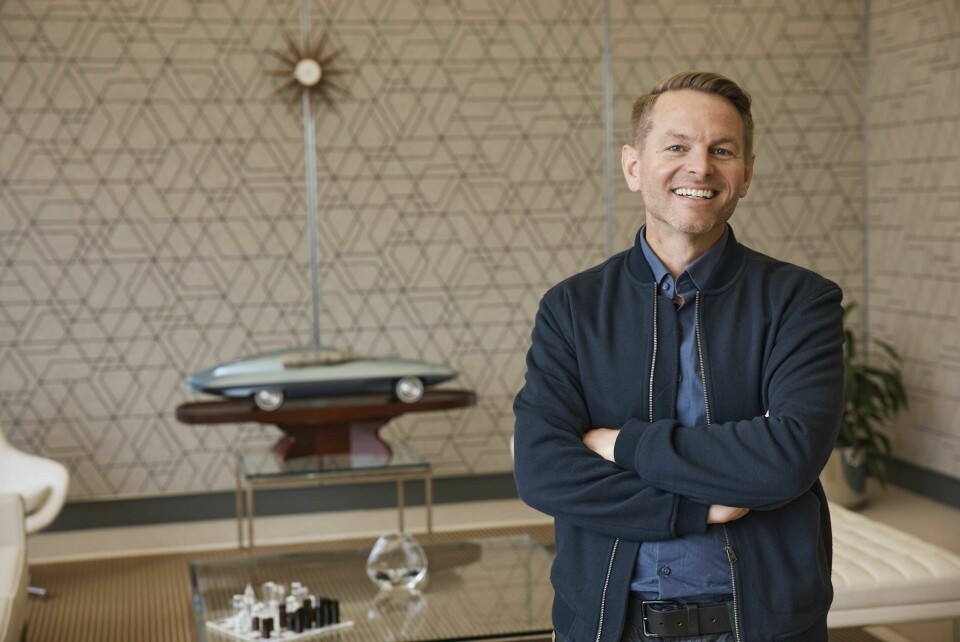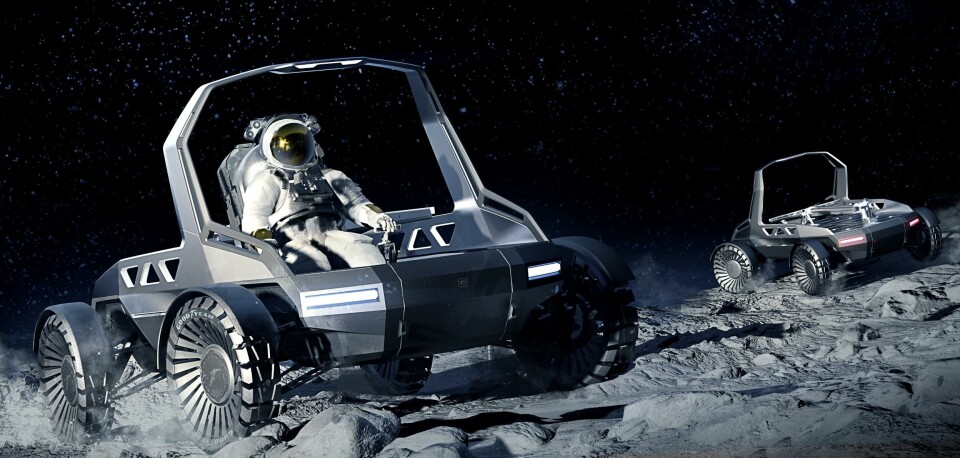
Car Design Review 9: Jeff Nield, General Motors
“I always get goosebumps when we talk about our lunar rover collaboration”
The main focus of the product and experience team is to think about where General Motors can go outside of traditional cars and trucks. Our backgrounds are diverse. We have automotive designers, interior designers, product designers, graphic designers, strategists and an architect. Think of it as a hybrid between an advanced studio, a production studio and a kind of creative lab. We’re out in the forefront, and we’re always out of our comfort zones.
Our company has been in the automotive space for a really long time, so we can leverage our talents and skills and our global footprint to expand into industries outside of automotive, such as aerospace and marine. One of the projects we’re most excited about is working with Lockheed Martin to co-develop a potential lunar rover, based on our Ultium EV platform.
GM did the last three lunar rovers for Apollo 15, 16 and 17 in the early 1970s, so I always get goosebumps when we talk about this collaboration. It blends so many different aspects of GM together: electrification, charging, autonomous technology, occupant packaging and a lot of high-level goals towards our growth strategy. For example, several people on our team worked on the Hummer and capability – a key attribute for Hummer – is relevant when you’re in a lunar environment. So to be immersed in that project really galvanised our team.
Mixing the team up and bringing in the designers early is critical
Our mentality is a lot like a start-up. We collaborate and work quickly with rapid prototyping and augmented reality, and we solve problems and listen to what customers are interested in benefiting from. We do a lot of customer journey mapping and storytelling and then we come up with these solutions and launch them to market. For the lunar rover project, we spent a lot of time talking with astronauts and listening to their experiences. We looked at their space suits and considered elements such as their visibility and their ability to receive haptic feedback.
One thing we changed based on their feedback was to relocate the occupants to the front, instead of having a side-entry. If they’re seated behind the front wheels, there’s a lot of lunar regolith [loose dust and deposits] that gets spun up into the air when the astronauts are looking over the platform towards the ground. But if they’re in the front, they can look down and see the terrain and manoeuvre around things. That was something that came from being curious, asking questions and being restless.
With projects like these, that are so radical and unknown, the traditional functions and departments people work in become insignificant. It becomes simply about seeing each other as people with automotive experience, whether they have a design or an engineering background. It created a cultural shift where everyone can contribute and because of this shift, design was at the table from ‘day one’.

We all know examples of when a platform and architecture was established first and then design was brought in to cover things with pleasing surfaces. In our studio, nothing could be further from the truth. Designers ask a lot of questions. They’re very creative and curious people and sometimes that’s how you innovate. So mixing the team up and bringing in the designers early is critical.
I like watching the digital world meet the analogue world and having those two things complement each other. That’s happening right now across the industry, and it’s a big emphasis for GM design. We have a dedicated immersive tech team that’s focused on keeping the studios running with augmented and virtual reality and we’re also fortunate in that we have one of the largest fabrication shops down the hallway. I love working digitally because you can do a wider bandwidth with less resource pull. But eventually there comes a point when you can sense the time is right to get into the physical space and then we’ll do rapid prototyping and scale. And eventually we’ll get to the point where we get into refining the surfaces. So we’re having a lot of fun mixing those two teams together and finding that blend.
If customers feel like they were a part of the journey, they develop a relationship with the business
The way we approach a project is also changing. If you look at how a car was developed five decades ago, it’s almost like the person was just kind of added at the end. Now, we’re designing from the inside out. It’s putting the customer at the centre and wrapping the product around the individual. A big part of that is learning what people like and to that end, our company is having more interactivity with the public. We’re putting sketches on our GM Instagram page that are maybe only six months old. That used to be unheard of, this entire organisation was under lock and key. The fact that we’re sharing our designs and ideas is very healthy, and I think it’s indicative of the transparency of our social culture.
I also think if customers feel like they co-developed or were a part of the journey, they develop a relationship with the business. You can see other companies that have done this, especially in Silicon Valley. We call it inviting them along for the ride. And we’re doing it in a sincere way because fresh perspectives are really important. If we can approach it from a space of humility, and show we’re going to try stuff and want anyone who has ideas, we can all be a part of this together.
Right now our new design studio in Warren, Michigan is under construction, and our team has been asked to create the furnishings. We’ve been involved in everything from the way the mills are set up on the plates, to the furniture the sculptors will have, to the areas where the executives will review things digitally. When you’re designing a space for designers, you have to really be ‘on point’ to make sure you’re thinking everything through, because they’re looking at it with a very informed eye. There’s a lot of knowledge and experience that’s being baked into these custom environments. When it’s done, there will be more than 350,000 sq ft in that building. It will be one of the largest design studios in the world, purpose-built for the company that brought the first car designer on board in 1926. So it’s kind of like full-circle now. That’s a rare privilege.



